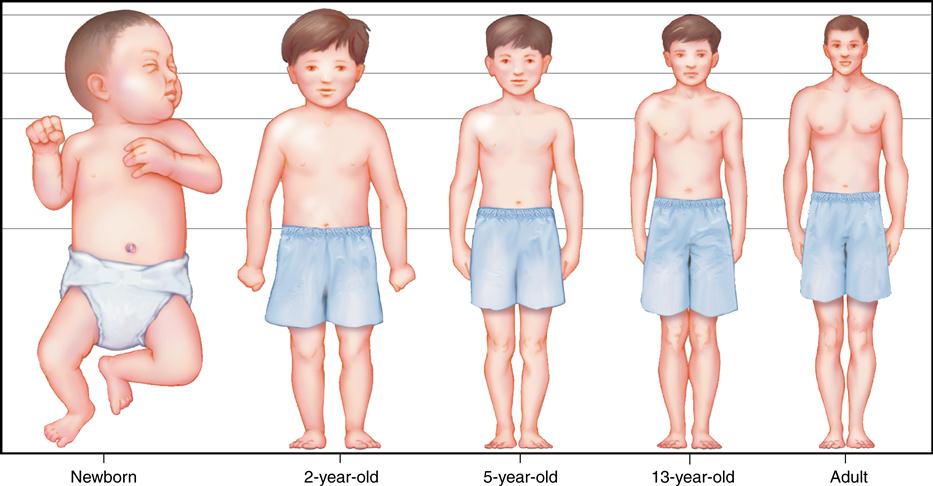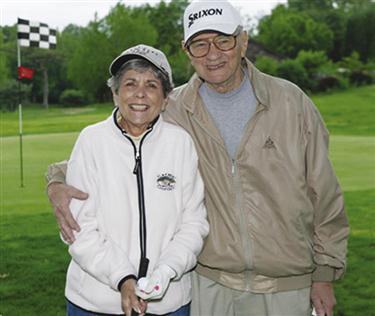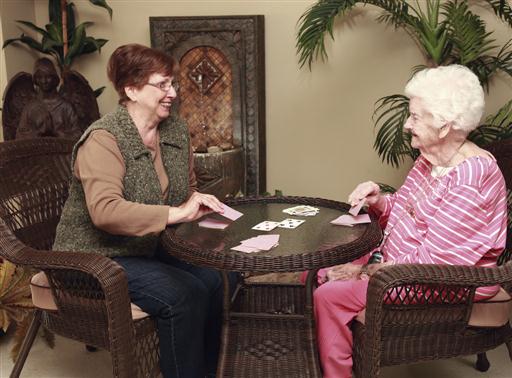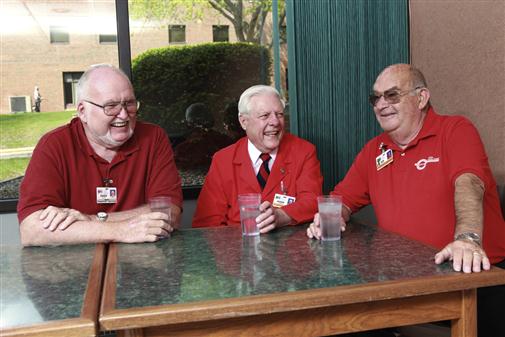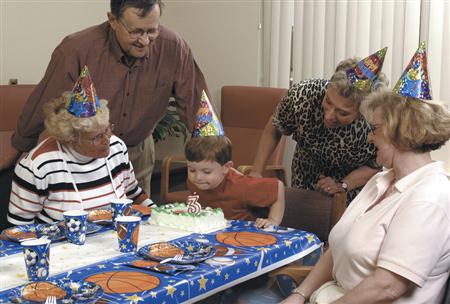The older person
Objectives
• Define the key terms and key abbreviations listed in this chapter.
• Identify the developmental tasks for each age-group.
• Identify the psychological and social changes common in older adulthood.
• Describe the physical changes from aging and the care required.
• Describe housing options for older persons.
Key terms
development Changes in mental, emotional, and social function
developmental task A skill that must be completed during a stage of development
dysphagia Difficulty (dys) swallowing (phagia)
dyspnea Difficult, labored, or painful (dys) breathing (pnea)
geriatrics The care of aging people
gerontology The study of the aging process
growth The physical changes that are measured and that occur in a steady, orderly manner
menopause When menstruation stops and there has been at least 1 year without a menstrual period
presbyopia Age-related (presby) farsightedness (opia means eye)
KEY ABBREVIATIONS
| CCRC | Continuing care retirement community |
| CMS | Centers for Medicare & Medicaid Services |
| OBRA | Omnibus Budget Reconciliation Act of 1987 |
People live longer than ever before. They are healthier and more active. U.S. government reports show the following for the United States:
• In 2009, there were nearly 39,600,000 people age 65 and older.
• In 2008, there were 16,500,000 men age 65 and older. There were 22,400,000 women age 65 and older.
• In 2008, there were more older men who were married than older women.
Chronic illness is common in older persons. Disability often results. Most older persons have at least one disability. Disabilities increase and become more severe with aging. They can interfere with:
• Self-care—bathing, dressing, eating, elimination
• Mobility and getting around one’s home setting
• Fixing meals, shopping, doing housework
Still, most older people live in a family setting. They live with a partner, children, brothers or sisters, or other family. Some live alone or with friends. Still others live in nursing centers. The need for nursing center care increases with aging.
Growth and development
Throughout life, people grow and develop. Growth is the physical changes that are measured and that occur in a steady, orderly manner. Growth is measured in height and weight. Changes in appearance and body functions also measure growth (Fig. 10-1).
Development relates to changes in mental, emotional, and social function. A person behaves and thinks in certain ways in each stage of development. A 2-year-old thinks in simple terms. A 40-year-old thinks in complex ways. The entire person is affected.
Growth and development occur in a sequence, order, and pattern. Certain skills must be completed during each stage. A developmental task is a skill that must be completed during a stage of development. A stage cannot be skipped. Each stage is the basis for the next stage. Each stage has its own characteristics and developmental tasks (Box 10-1, p. 116).
Late adulthood (65 years and older)
Late adulthood ranges from 65 years of age and older. The oldest-old are 85 years of age and older.
Gerontology is the study of the aging process. Geriatrics is the care of aging people. Aging is normal. It is not a disease. Normal changes occur in body structure and function. They increase the risk for illness, injury, and disability. Psychological and social changes also occur. Often changes are slow. Most people adjust well to these changes. They lead happy, meaningful lives. The developmental tasks of late adulthood are listed in Box 10-1, p. 116.
There are many myths about aging and older persons. A myth is a widely believed story that is not true. To provide good care, you need to know the facts about older persons and aging. See Box 10-2, p. 116 for some common myths and facts.
Psychological and social changes
Graying hair, wrinkles, and slow movements are physical reminders of growing old. These changes affect self-esteem. They threaten self-image and feelings of self-worth. They also threaten independence.
Social roles also change. A parent may depend on an adult child for care. Retirees need activities to replace the work role. Adjusting to the death of a partner, family members, and friends is common. The person faces his or her own death.
People cope with aging in their own way. How they cope depends on health status, life experiences, finances, education, and social support systems.
Retirement
Age 65 is the usual retirement age. Some retire earlier. Others work into their 70s. Retirement is a reward for a life-time of work. The person can relax and enjoy life (Fig. 10-2). Travel, leisure, and doing what one wants to are retirement “benefits.” Many people enjoy retirement. Others are not so lucky. They are ill or disabled. Poor health and medical bills can make retirement very hard.
Work helps meet love, belonging, and self-esteem needs. The person feels fulfilled and useful. Friendships form. Co-workers share daily events. Leisure time, recreation, and companionship often involve co-workers. Some retired people want to work. They have part-time jobs or do volunteer work (Fig. 10-3).
Reduced income
Retirement usually means reduced income. Social Security may provide the only income.
The retired person still has expenses. Rent or house payments continue. Food, clothing, utility bills, and taxes are other expenses. Car expenses, home repairs, drugs, and health care are other costs. So are entertainment and gifts.
Reduced income may force life-style changes. Examples include:
• Limiting social and leisure events
• Buying cheaper food, clothes, and household items
• Living with children or other family
• Avoiding health care or needed drugs
• Relying on children or other family for money or needed items
Severe money problems can result. Some people plan for retirement. They have savings, investments, retirement plans, and insurance. They are financially comfortable during retirement.
Social relationships
Social relationships change throughout life. (See Caring About Culture: Foreign-Born Persons.) Children grow up and leave home. They have their own families. Some live far away from parents. Older family members and friends die, move away, or are disabled. Yet most older people have regular contact with children, grandchildren, family, and friends. Others are lonely. Separation from children is a common cause. So is lack of companionship with people their own age (Fig. 10-4, p. 118).
Many older people adjust to these changes. Hobbies, religious and community events, and new friends help prevent loneliness. Some community groups sponsor bus trips to ball games, shopping, plays, and concerts.
Grandchildren can bring great love and joy (Fig. 10-5). Family times help prevent loneliness. They help the older person feel useful and wanted (Fig. 10-6).
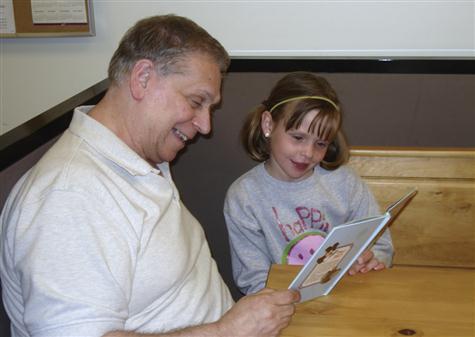
See Focus on Communication: Social Changes.
Children as caregivers
Some children care for older parents. Parents and children change roles. The child cares for the parent. This helps some older persons feel more secure. Others feel unwanted, in the way, and useless. Some lose dignity and self-respect. Tensions may occur among the child, parent, and other household members. Lack of privacy is a cause. So are disagreements and criticisms about housekeeping, raising children, cooking, and friends.
Death of a partner
As couples age, the chances increase that a partner will die. Women usually live longer than men. Therefore many women become widows.
A person may try to prepare for a partner’s death. When death occurs, the loss is crushing. No amount of preparation is ever enough for the emptiness and changes that result. The person loses a lover, friend, companion, and confidant. Grief may be very great. The person’s life will likely change. Serious physical and mental health problems may result. Some lose the will to live. Some attempt suicide.
Physical changes
Physical changes occur with aging (Box 10-3). They happen to everyone. Body processes slow down. Energy level and body efficiency decline. The rate and degree of change vary with each person. They depend on such factors as diet, health, exercise, stress, environment, and heredity. Changes are slow over many years. Often they are not seen for a long time.

